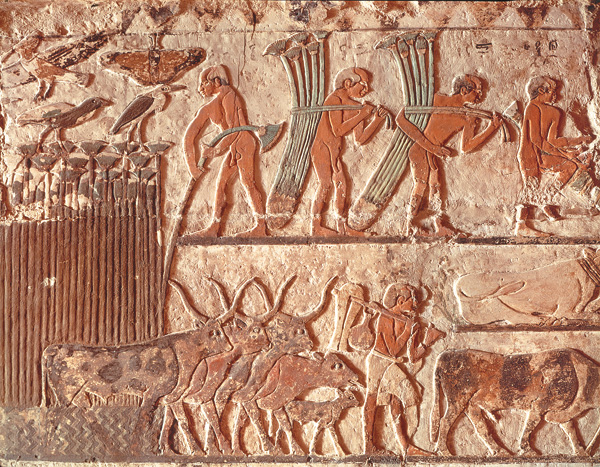Ancient Life: Practical Papyrus
The Plant with a Thousand Uses

Ancient Egyptian farmers harvest papyrus on this relief from the mid-third-millennium B.C. tomb of Nefer el Ka-Hay, in Saqqara, Egypt, about 10 miles south of Cairo.
Papyrus was particularly abundant in the marshes of the Nile Delta. In fact, the name for Lower Egypt (that is, northern Egypt) consisted of papyrus plants growing out of the hieroglyph for “land.”
The Egyptians wove the versatile papyrus reed into mats, rope, fabric and utensils. They even lashed together stalks of papyrus to create rafts, allowing them to cross the crocodile-infested waters of the Delta.
But papyrus’s noblest use was as a writing material. (Our word “paper” derives from the Greek papyros.) Papyrus sheets were produced by removing the plant’s green outer layers, cutting the pith into thin strips, soaking the strips in water to remove the sugars, and pounding the strips to break down the fibers. The flattened strips were then placed on top of one another at right angles, forming a square sheet, and this sheet was pounded again to create a felt-like texture. Finally, the sheets were weighted down with a heavy stone slab while they dried out.
Shorter items like letters and receipts were written on individual papyrus squares, rarely much larger than 15 inches on a side. Longer texts were recorded on scrolls (or rolls) formed by attaching papyrus sheets together, end to end; a common length of a papyrus scroll was 20 squares. These long scrolls would be inscribed with ink and rolled up like a carpet, with the writing on the inside.
Already a library member? Log in here.
Institution user? Log in with your IP address.

